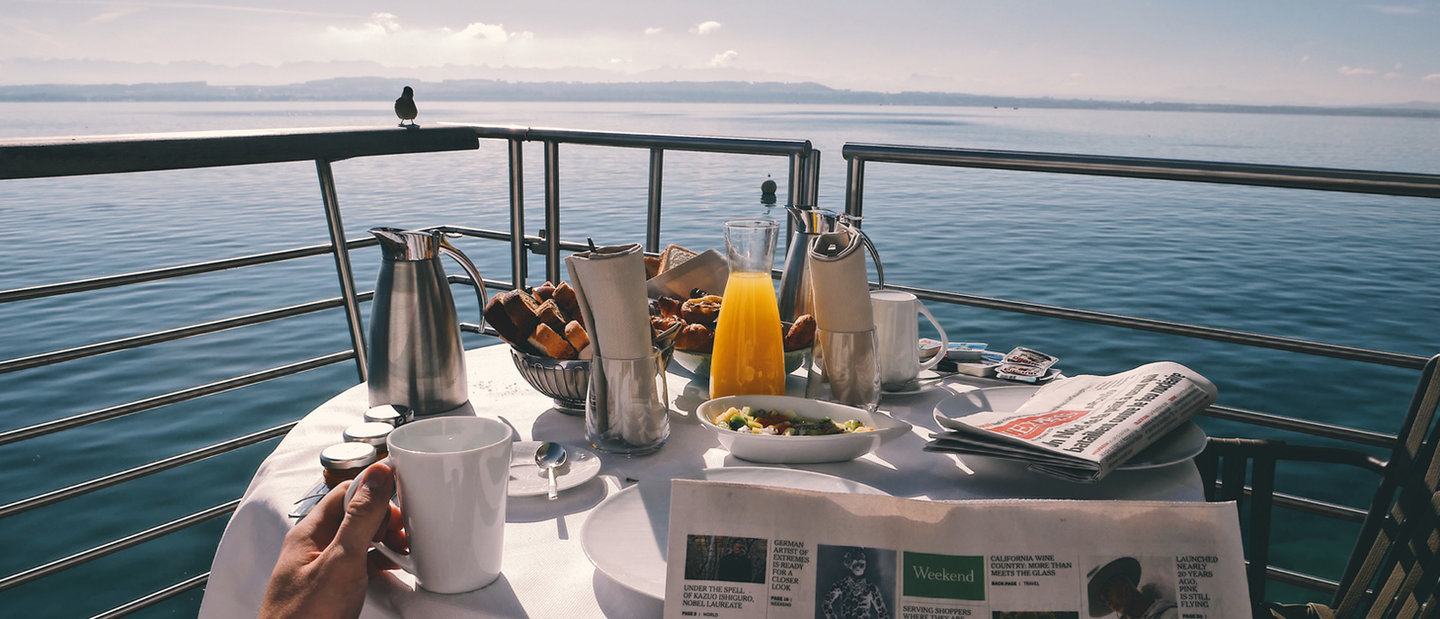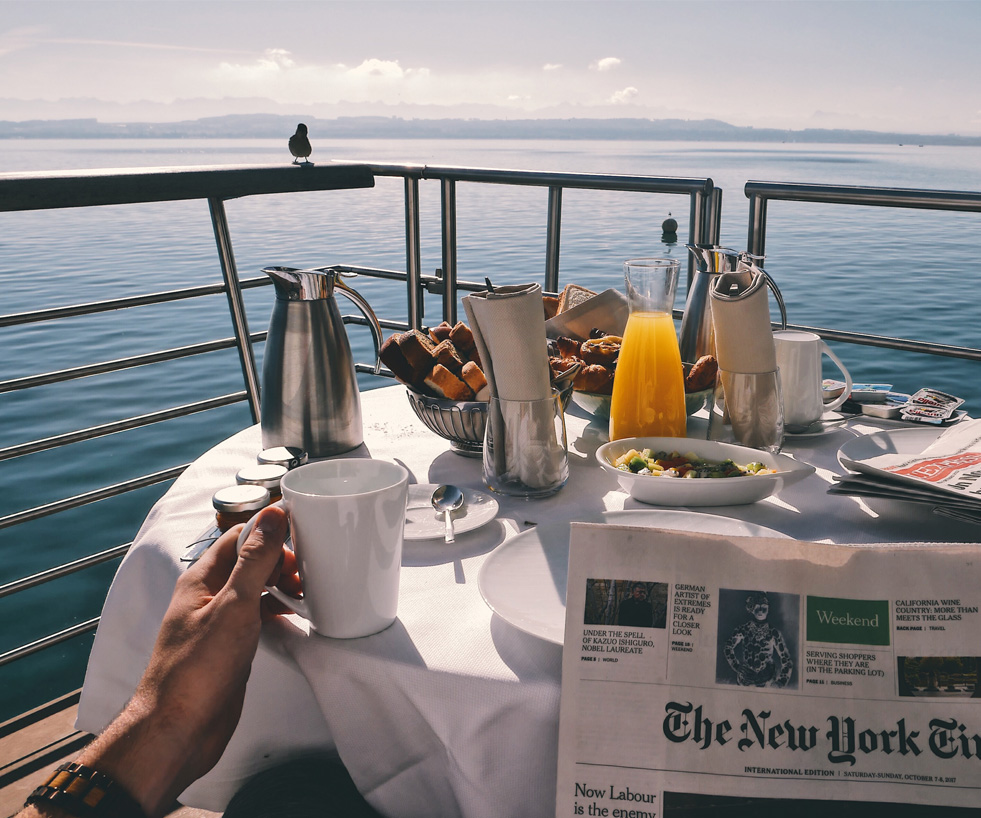PAVING THE WAY TO 2018 CRUISING
The MSC Meraviglia is the first of a new fleet of high-tech ships MSC Cruises is launching over the next decade. Frances Marcellin went on board to speak to the team behind the ship’s cutting-edge technology
WITH A NEW YEAR UPON US AND FAVORABLE ANNUAL PASSENGER PREDICTIONS, CRUISE OPERATORS WORLDWIDE ARE SCHEDULING WORKin a serious aim to remain a desirable and relevant—today and in future years.
From our Monaco offices we are working on several cruise ships, and are discerning two primary trends in demand.
One is a number of existing cruise lines scheduling updates for their current fleet. Though occasionally prompted by a change in class regulations, more often than not the opportunity is being taken to structurally accommodate established developments observed in passenger aspirations.


There are major physical aspects which from a commercial standpoint are now deemed crucial to take into account. Classic room configurations and amenities for example are now outdated, and statistically passengers will choose a smaller but better designed cruise ship over larger but more traditional options. Open plan designs, floor to ceiling windows, increased vertical fields of sight and indoor areas which can quickly be converted into outdoor ones are the most popular structural options. Additionally, we are seeing requests for system updates to increase onboard connectivity and Wi-Fi use so as to gain an edge over competing cruise lines.
There are also emotional aspects being taken into consideration. Whether they fall in the millennial or senior citizen category, the modern day passenger craves a more complex cruising package. They are on the lookout for increased novelty and variety in dining, social and activities on offer. They also seek an experience which will offer sustainability and eco-friendly credentials they themselves can feel good about supporting. Cruise line procedures and practices both onboard and offshore are therefore being scrutinized more than ever, but this interest opens up innovative avenues from which cruise operators can satisfy clientele. Companies who are serious about staying abreast of competition are exploring each one, and we have put together a comprehensive catalogue on cost-effective options.
Finally, due to recent popularity surges in health and fitness, the average passenger is also more likely to steer towards conforming options such as seminars, food choices and activities. Many of the mentioned aspects can be delivered through organization onboard, but structural updates like convertible spaces, modern layouts, a running track or larger gym facilities will translate directly into more bookings.
The second trend being witnessed is in new builds and refits looking to showcase the very trends which are driving cruising popularity.
We have identified three major ones.
I. Eco-Luxe
The eco-luxury trend has created a revival of the classic sailing ship, updated for the discernible modern palate.
The cruise industry is no stranger to passengers seeking decadence onboard, but in addition to luxury comparable to a hotel or a private yacht a large segment of 2018’s passengers will be seduced by cruises which sport a strong eco-conscious. From destinations and itineraries to onboard gastronomy and linen choices, “green” credentials are the new black. Capitalization on this trend is being done in a number of ways, including: opting for sailing ships, implementing solar powered systems or investing in the new wave of techniques and technologies which crew can take pride in using, and in turn transmit their excitement to passengers.
II. Expedition Cruising
Cruise operators both new and established are breaking into the niche market of expedition cruising.
Expedition cruising remains today’s most popular holiday choice, and cruise operators are entering the market via both new builds and extensive refits. Structurally speaking, this is a very rigid niche which requires smaller ships of under 300 passengers which are amply seaworthy, compliant with most stringent rules and codes including the Polar Code, and are able to calls in remote regions without port facilities.
Though refits are at a disadvantage to new builds who are able to easily pair latest technologies with modern and bright interiors, thereby offering them a product which is attractive and economical to operate, careful planning from the naval architect can give just as successful results. In anticipation, we have performed extensive research on the current expedition market for the Artic and Antarctic to offer key solutions—such as improving public spaces to give possibilities for creating group spirit whilst allowing guests more personal space arrangements; and offering crew service and work zones ergonomically designed to enable a smaller crew to delivery a higher quality level of service.
III. Floating Hotels
Amenities offered in floating hotels can include indoor gardens, coffee shops, cinema rooms, theaters, prayer rooms and health clinics.
With land accommodation, passengers seeking an onboard experience identical to a land-based resort are on the rise. Established hotel chains are typically launching their own vessels as a tag-on to their current model, but a number of brand-new dedicated fleets are also under construction. Floating hotels gain traction over their mobile counterparts by offering lavishly designed interiors with a multitude of amenities and spaces over several decks. Due to lessened restrictions, this option is a particularly exciting prospect for cruise operators who are focused on design and passenger experience rather than operating a vessel.
contact us
McFarlane ShipDesign
47 Rue Grimaldi
MC 98000 Monaco
Please call us to set an appointment
Tel: +377.97.70.69.26